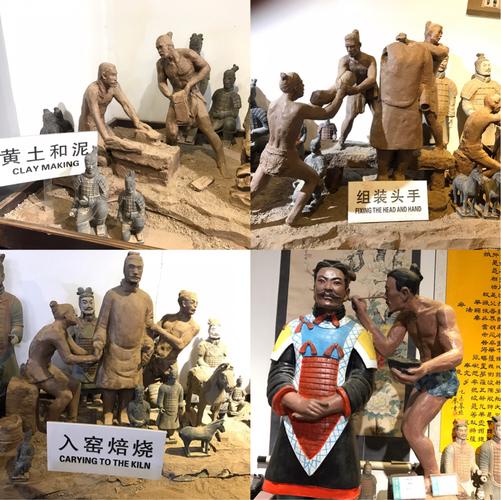
How Were So Many Soldiers Created in the Terracotta Army?
The Terracotta Army, a vast collection of life-sized terracotta figures, is one of the most impressive feats of ancient craftsmanship. This army of over 8,000 soldiers, chariots, and horses, buried alongside China's first emperor Qin Shi Huang, has captivated the world since its discovery in 1974. But how did ancient artisans manage to create so many unique and detailed figures?
Workshop Production and Labor
The terracotta figures weren't crafted in a single location but were manufactured in workshops established by the Qin government near the emperor's mausoleum. These workshops, believed to be vast and numerous, employed a massive labor force.
- Government Laborers: A significant portion of the workforce comprised convicts and forced laborers conscripted by the Qin government. These individuals, often working under harsh conditions, performed the more labor-intensive tasks like digging clay, transporting materials, and preparing molds.
- Skilled Craftsmen: Working alongside the laborers were skilled artisans and craftsmen. These individuals, likely drawn from across the Qin empire, possessed specialized knowledge in pottery making, sculpting, and kiln firing. They played a critical role in designing the figures, creating molds, refining details, and overseeing the firing process.
A Standardized yet Individualized Process
To create such a massive army efficiently, the artisans employed a sophisticated combination of standardization and individualization.
-
Modular Construction: Rather than sculpting each figure individually, the figures were created using a modular system. Heads, arms, legs, and torsos were created separately in molds and then assembled.
- Heads: Evidence suggests the heads were created using a combination of molds and hand carving. This allowed for a degree of individualization in facial features, hair styles, and expressions.
- Limbs: Arms and legs were also mold-made but often posed differently to create variation within the ranks of soldiers.
- Torsos: The hollow torsos were built using coils of clay, providing structural integrity while minimizing material use.
-
Luting and Assembly: Once the individual parts were fired, they were assembled by luting them together using a clay slip. This technique involved applying a liquid clay mixture to the joining surfaces, which acted as a bonding agent when dried.
Attention to Detail and Final Touches
What makes the Terracotta Army truly remarkable is the incredible attention to detail evident in each figure.
- Individualized Features: While the figures share a standardized structure, their faces, hairstyles, armor, and clothing vary significantly, creating a sense of individuality within the ranks.
- Weapons and Armor: The soldiers were originally equipped with real weapons, such as bronze swords, spears, and crossbows, highlighting the military might of the Qin dynasty. Their armor, crafted from leather and bronze plates, was also meticulously detailed.
- Pigments and Color: After firing, the figures were originally painted in vibrant colors using natural pigments. Traces of these pigments reveal that the army was once a dazzling spectacle of color, further adding to its realism.
Q&A
Q: How long did it take to create the entire Terracotta Army?
A: It's estimated that the creation of the Terracotta Army was a massive undertaking that spanned several decades, beginning shortly after Emperor Qin Shi Huang ascended the throne in 221 BCE and continuing until after his death in 210 BCE.
Q: What is the significance of the different ranks and uniforms depicted in the army?
A: The figures represent a hierarchical military structure with distinct ranks and roles, including generals, officers, infantrymen, archers, and charioteers. Their uniforms and armor reflect their positions and provide valuable insights into the military organization of the Qin Dynasty.
Q: Are there any plans to excavate the entire Terracotta Army?
A: While significant portions of the army have been excavated, a large part remains buried. Archaeologists and conservators are proceeding with caution. They are prioritizing the preservation of the excavated figures while developing new techniques to protect the fragile paint and materials of those still underground.